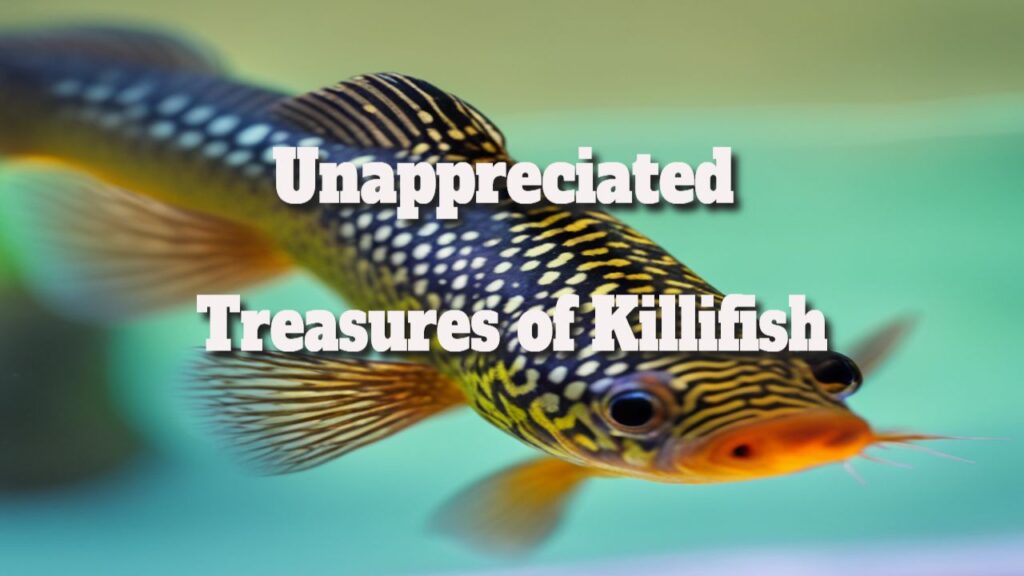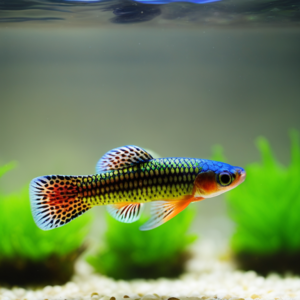Discover the Hidden Beauty and Diversity of Killifish in Your Aquarium
Despite being some of the most vibrant and colorful freshwater fish available for aquarium enthusiasts, killifish often go unrecognized within the aquarium hobby. Their rarity in local fish stores can be surprising, as they offer unique beauty and fascinating behaviors that can enhance any aquatic setup. Killifish come in various stunning colors and patterns, making them a delightful addition to both beginner and experienced aquarists' collections. By exploring the world of killifish, you can uncover their captivating characteristics and learn how to properly care for these incredible creatures, elevating your aquarium experience to new heights.
Known scientifically as a member of the Cyprinodontidae family, killifish are closely related to popular aquarium fish such as mollies, guppies, swordtails, and platies. These small yet vibrant fish typically range in size from 1 to 2 inches, with some remarkable species reaching up to 6 inches long. In captivity, killifish generally have a lifespan of two to five years, depending on their care and environment. Their unique traits and requirements make them an exciting challenge for aquarists looking to diversify their fish collection.
The most distinctive aspect of killifish is their varied spawning techniques, which classify them into three main categories: annuals, semi-annuals, and non-annuals. Each of these categories has adapted to specific environmental conditions, showcasing the resilience and adaptability of these fascinating fish. Understanding these reproductive strategies is crucial for hobbyists looking to breed killifish successfully and can provide valuable insights into their care and maintenance.
Annual killifish thrive in temporary pools that experience seasonal drying, where they complete their life cycle in under a year, hatching, growing, reproducing, and dying within a short span. Their eggs can enter a dormant state, remaining viable until the next rainy season rehydrates their habitat. In contrast, semi-annual killifish can survive in environments that may or may not dry out completely, while non-annuals are found in permanent water bodies. This diversity in habitat preferences adds to the allure of keeping killifish.
Caring for killifish can range from straightforward to quite intricate, depending on the particular species you choose. While some may have specific needs, the effort put into their care can yield rewarding experiences, especially if you're seeking to explore something out of the ordinary in your aquarium. Taking the time to understand their requirements can lead to a successful and enriching experience in keeping killifish, making them a worthwhile addition to your aquatic environment.
Understanding the Natural Habitats of Killifish Worldwide
Killifish are found inhabiting tropical and subtropical waters across the globe, with the exception of Australia and Antarctica. These fascinating fish thrive in a variety of environments, including temporary ponds, marshes, creeks, and shallow streams. Some species even adapt to brackish estuaries, showcasing their versatility. Many killifish prefer habitats with overhanging trees and vegetation, which provide essential cover and create low-light conditions while ensuring cooler temperatures. Notably, certain species, like the pupfish native to the southwestern United States, are remarkable for their ability to endure extreme conditions, living in desert pools with water temperatures exceeding 90°F.
Essential Water Conditions to Keep Your Killifish Healthy
While many killifish species thrive in soft, acidic water, there has been a growing trend of captive-bred strains that adapt well to local water conditions. Before acquiring killifish, it's crucial to conduct thorough research to understand the specific water requirements from which the fish were raised. Each species has its preferred conditions; however, most killifish do best at a pH level of 6.0 to 7.0, total hardness of 7° to 10° (120 ppm to 160 ppm), and a temperature range of 68° to 75° Fahrenheit. These parameters are vital for ensuring the health and well-being of your fish.
While some experienced killifish keepers choose to forgo filters in favor of regular water changes, it is generally recommended to use a hang-on-the-back or sponge filter for maintaining optimal water quality. To achieve the desired temperature and filtration, it's advisable to use an Aqueon Aquarium Heater and perform water changes of 10% weekly or 25% bi-weekly using an Aqueon Aquarium Water Changer or a Syphon Vacuum Gravel Cleaner. Remember to treat tap water with a Water Conditioner before introducing it to your aquarium to avoid harmful chemicals.
Creating the Ideal Housing Environment for Your Killifish
Due to their diminutive size, many killifish are perfect candidates for nano and desktop aquariums. A tank size of 5 to 10 gallons can comfortably accommodate a small trio of species, whereas community setups or housing multiple males necessitate a larger aquarium of 20 gallons or more. To create a suitable environment, it’s important to keep lighting levels subdued and add elements like peat moss or driftwood to non-breeding tanks. This not only softens the water and lowers the pH but also enhances the aesthetic appeal of the aquarium. Additionally, incorporating low-light tolerant plants such as Cryptocorynes, Java moss, and Java ferns can create a natural habitat. Given that killifish are known for their jumping ability, a secure lid is essential to prevent any escapes!
Understanding Killifish Behavior and Compatibility in Aquariums
While many killifish enthusiasts prefer to keep them in species-only tanks, a number of varieties can cohabitate within communal aquariums. Generally, killifish exhibit calm temperaments; however, males can exhibit aggression and territorial behavior toward one another. This is particularly true for certain species. For instance, the Golden Wonder Killie (Aplocheilus lineatus) and the Blue Gularis (Fundulopanchax sjoestedti), both of which are popular and widely available, tend to be more aggressive and should ideally be housed alone or with equally spirited fish. Always conduct thorough research on the species you plan to introduce to ensure compatibility and minimize stress in your aquarium.
Nourishing Your Killifish: A Guide to Their Diet
Killifish are primarily carnivorous and thrive on a diet rich in proteins. Acceptable food options include frozen brine shrimp, daphnia, mysis shrimp, mosquito larvae, and bloodworms, as well as newly hatched brine shrimp nauplii, depending on the size of your fish. While killifish can be resistant to dry foods, many hobbyists have found success incorporating them into their diet. Brands like Aqueon Tropical Flakes, Colour Flakes, Betta Food, and Betta Treat can be excellent choices for providing nutrition. Aim to offer a variety of foods, but ensure you only provide what they can consume in a two-minute timeframe, feeding them once or twice daily.
Breeding Killifish: Tips for Success from Easy to Challenging
Killifish reproduction involves laying eggs, and they can be categorized based on their spawning behavior as either top or bottom spawners; some species may even alternate between these methods. The complexity of breeding varies across species, with a selection of them being suitable for even novice breeders. To successfully breed annuals or semi-annuals, it is recommended to set up a breeding tank ranging from 2½ to 5½ gallons, filled with peat moss, and adorned with almond or oak leaves at the bottom. This setup mimics their natural breeding environment, increasing the likelihood of successful reproduction.
The post Unappreciated Treasures of Killifish appeared first on Unity Pets.
The Article Unappreciated Treasures of Killifish Was Found On https://limitsofstrategy.com
The Article Unappreciated Treasures of Killifish First Appeared ON
: https://ad4sc.com






Comments are closed